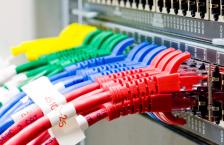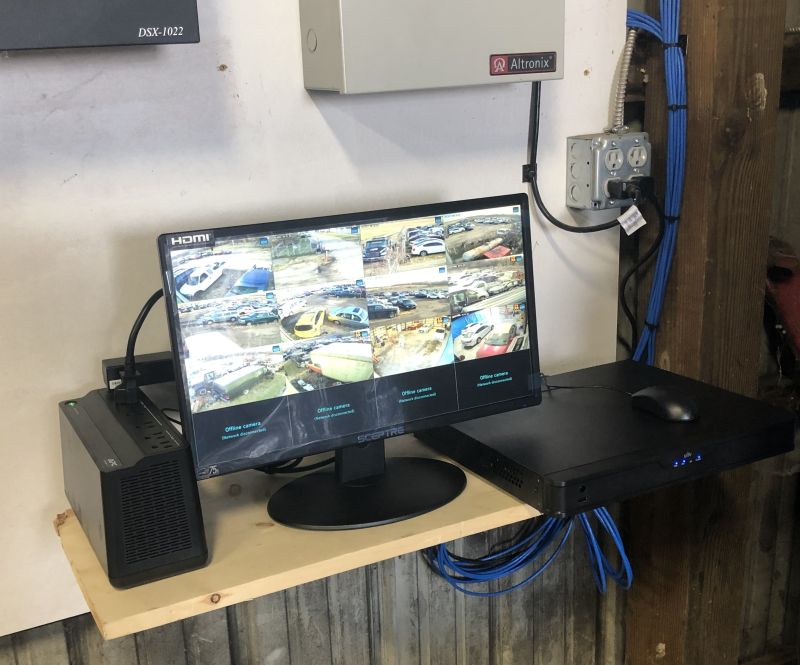As a seasoned network technician, I’ve witnessed firsthand the evolution of Ethernet cables over the years. From the early days of Cat5 to the cutting-edge performance of Cat6a, each new standard has brought significant advancements in speed, reliability, and crosstalk reduction. In this comprehensive guide, we’ll dive deep into the world of Ethernet cables, exploring the key differences between Cat5, Cat5e, Cat6, and Cat6a, and help you determine which type of cable is best suited for your specific networking needs.
Understanding the Basics: Ethernet Cable Categories
Before we delve into the nuances of each cable type, let’s establish a foundation by understanding the concept of Ethernet cable categories. These categories, denoted by numbers like 5, 5e, 6, and 6a, represent different performance standards set by the Telecommunications Industry Association (TIA) and the International Organization for Standardization (ISO).
Each subsequent category builds upon the capabilities of its predecessor, offering improvements in bandwidth, transmission speed, and crosstalk reduction. As network demands continue to grow, new cable categories emerge to keep pace with evolving technology.
Cat5: The Legacy Cable
Category 5, or Cat5, was once the go-to choice for Ethernet networking. Ratified in 1991, Cat5 cables support speeds up to 100 Mbps and frequencies up to 100 MHz. While Cat5 was a reliable workhorse for its time, it has since been largely replaced by newer, more advanced cable categories.
One of the primary limitations of Cat5 is its susceptibility to crosstalk, which is the unwanted interference between adjacent cable pairs. As network speeds increased, the impact of crosstalk became more pronounced, leading to potential data corruption and reduced performance.
Cat5e: Enhanced Performance
To address the shortcomings of Cat5, the TIA introduced Category 5 Enhanced, or Cat5e, in 1999. Cat5e cables offer several key improvements over their Cat5 counterparts:
- Increased Bandwidth: Like Cat5, Cat5e supports frequencies up to 100 MHz. However, Cat5e is designed to maintain signal integrity over longer distances, allowing for more reliable data transmission.
- Reduced Crosstalk: Cat5e cables feature tighter twists in the wire pairs, which helps minimize crosstalk. While crosstalk can still occur in Cat5e, it is significantly reduced compared to Cat5, resulting in cleaner, more stable connections.
- Gigabit Ethernet Support: One of the most significant advantages of Cat5e is its ability to support Gigabit Ethernet speeds (1000 Mbps). This makes Cat5e a popular choice for home networks and small businesses looking to future-proof their infrastructure.
It’s worth noting that Cat5e is backward compatible with Cat5, meaning you can use Cat5e cables in existing Cat5 networks without any issues. However, to take full advantage of Cat5e’s capabilities, all components in the network should support the enhanced standard.
Cat6: Stepping Up the Game
As network demands continued to grow, the need for even higher performance cables became apparent. Enter Category 6, or Cat6. Ratified in 2002, Cat6 cables offer a significant step up in terms of speed and bandwidth compared to Cat5e.
Key features of Cat6 include:
- Higher Bandwidth: Cat6 cables support frequencies up to 250 MHz, a 2.5x increase over Cat5e. This higher bandwidth allows for faster data transmission and reduced signal loss over longer distances.
- Improved Crosstalk Reduction: Cat6 cables take crosstalk reduction to the next level by incorporating advanced shielding techniques. Each wire pair is individually wrapped in a plastic insulator, which is then twisted tightly with the other pairs. This design minimizes electromagnetic interference (EMI) and further reduces crosstalk.
- 10 Gigabit Ethernet Support: While Cat5e is limited to Gigabit Ethernet speeds, Cat6 can support 10 Gigabit Ethernet (10 Gbps) over shorter distances (up to 55 meters). This makes Cat6 an attractive option for high-bandwidth applications like video streaming, online gaming, and large file transfers.
Cat6 cables are backward compatible with both Cat5 and Cat5e, allowing for easy integration into existing networks. However, to fully harness the potential of Cat6, all components in the network should be Cat6-compliant.
Cat6a: The Future-Proof Solution
For those seeking the ultimate in Ethernet performance, Category 6 Augmented, or Cat6a, is the answer. Introduced in 2008, Cat6a represents the pinnacle of copper-based Ethernet cabling, offering unparalleled speed, bandwidth, and crosstalk reduction.
Here’s what sets Cat6a apart:
- Expanded Frequency Range: Cat6a cables support frequencies up to an impressive 500 MHz, doubling the bandwidth of Cat6. This increased frequency range enables Cat6a to maintain signal integrity over longer distances, making it ideal for large-scale networks.
- 10 Gigabit Ethernet over Longer Distances: While Cat6 can support 10 Gbps speeds over short distances, Cat6a extends this capability to the full 100-meter length of the cable. This means you can achieve 10 Gigabit Ethernet performance across an entire network without the need for signal boosters or repeaters.
- Superior Crosstalk Reduction: Cat6a takes crosstalk reduction to new heights by employing even more advanced shielding techniques. In addition to the individual pair shielding found in Cat6, Cat6a cables feature an overall braided screen that encases all four pairs. This additional layer of protection virtually eliminates crosstalk, ensuring maximum signal quality and reliability.
One important consideration with Cat6a is its increased size and weight compared to previous categories. The extra shielding and thicker conductors make Cat6a cables notably larger in diameter, which can impact cable management and installation. However, for networks that demand the highest possible performance and future-proofing, the benefits of Cat6a far outweigh the challenges of its physical characteristics.
Choosing the Right Ethernet Cable for Your Needs
With a solid understanding of the differences between Cat5, Cat5e, Cat6, and Cat6a, you’re well-equipped to make an informed decision about which type of Ethernet cable is best suited for your specific requirements. Consider the following factors when selecting a cable category:
- Network Speed Requirements: Assess your current and future network speed needs. If you primarily use your network for basic tasks like web browsing and email, Cat5e may suffice. However, if you frequently transfer large files, stream high-quality video, or engage in online gaming, Cat6 or Cat6a will provide the necessary bandwidth and performance.
- Future-Proofing: Think about the potential growth of your network. While Cat5e may meet your current needs, investing in Cat6 or Cat6a can future-proof your infrastructure, ensuring it can handle increasing bandwidth demands in the years to come.
- Budget Considerations: Higher-category cables generally come with a higher price tag. Evaluate your budget and determine the best balance between performance and cost. Keep in mind that investing in a higher-quality cable now can save you from costly upgrades down the line.
- Compatibility: Ensure that the cable category you choose is compatible with your existing network components. While higher-category cables are backward compatible, you may not see the full benefits if other components are not up to par.
Real-World Scenarios
To help illustrate the practical applications of different Ethernet cable categories, let’s explore a few real-world scenarios:
Scenario 1: Home Office
In a typical home office setup, Cat5e is often sufficient. It supports Gigabit Ethernet speeds, which is more than enough for most home applications like web browsing, email, and basic file sharing. However, if you frequently work with large files or engage in bandwidth-intensive tasks like video editing or graphic design, upgrading to Cat6 can provide a noticeable performance boost.
Scenario 2: Small Business Network
For small businesses with growing network demands, Cat6 is often the best choice. The increased bandwidth and improved crosstalk reduction of Cat6 can help future-proof the network infrastructure as the business expands. Additionally, Cat6’s support for 10 Gigabit Ethernet over shorter distances can be beneficial for connecting servers or other high-performance devices.
Scenario 3: Enterprise Network
In large-scale enterprise networks, Cat6a is the clear winner. The ability to maintain 10 Gigabit Ethernet speeds over the full 100-meter length of the cable makes Cat6a ideal for connecting multiple floors or buildings. The superior crosstalk reduction and expanded frequency range of Cat6a ensure maximum performance and reliability, even in the most demanding network environments.
Conclusion
Selecting the right Ethernet cable is crucial for ensuring optimal network performance and reliability. By understanding the key differences between Cat5, Cat5e, Cat6, and Cat6a, you can make an informed decision based on your specific needs and budget.
Remember, investing in a higher-quality cable today can save you from headaches and costly upgrades in the future. Whether you’re setting up a home office, expanding a small business network, or managing a large-scale enterprise infrastructure, choosing the right Ethernet cable category will lay the foundation for a fast, reliable, and future-proof network.





